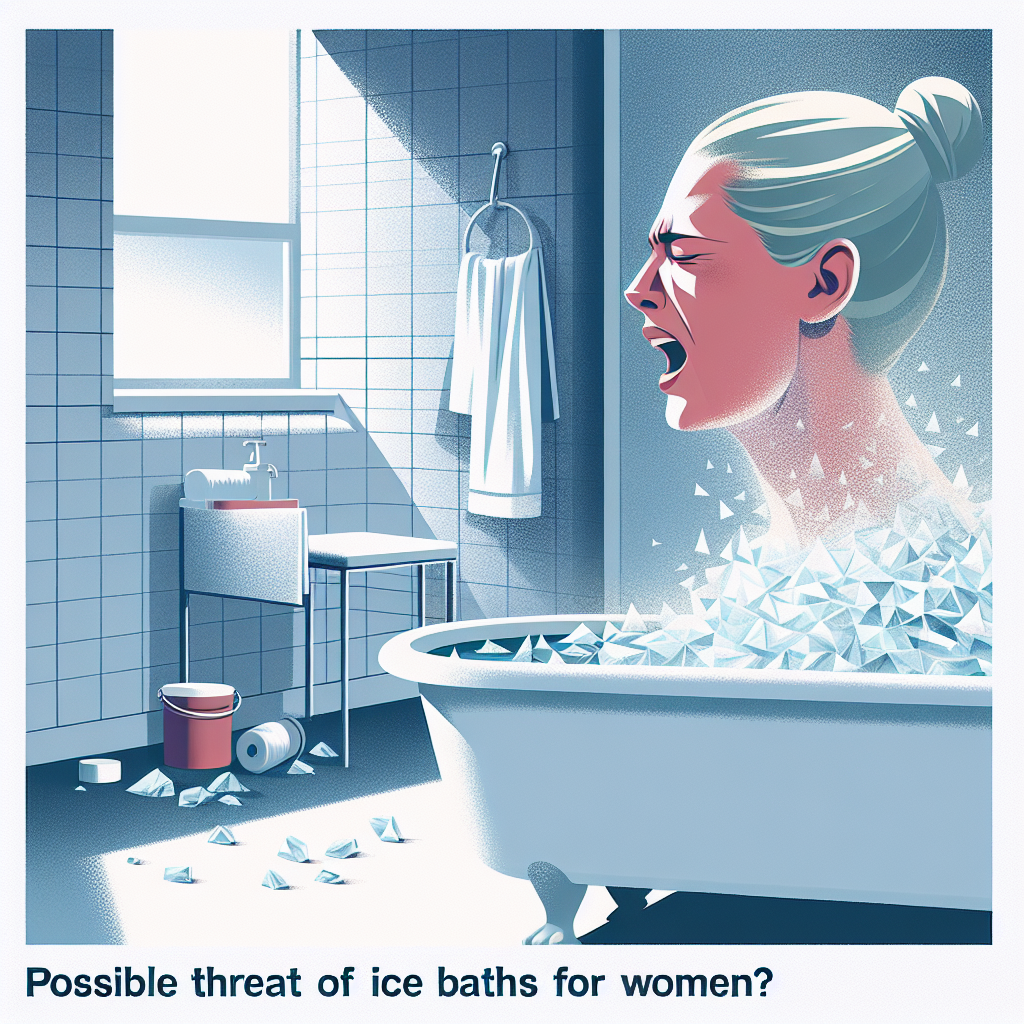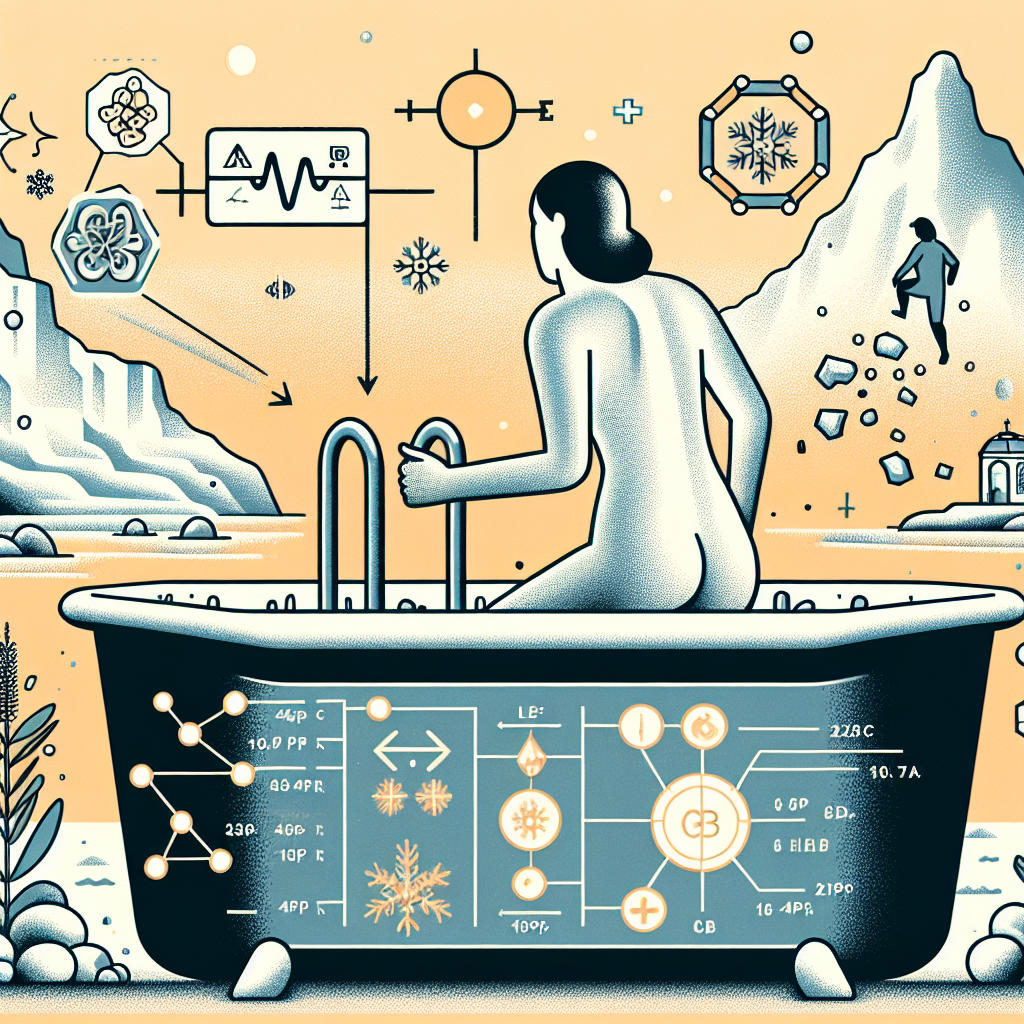Why Ice Baths Could Be Harmful for Women

Discover why ice baths could potentially be harmful for women. Learn about the risks and precautions you need to take before deciding to take an ice bath. For more information, click here.
The Impact of Ice Baths on Women’s Hormonal Balance
Ice baths, a popular recovery method among athletes, have been touted for their potential benefits in reducing inflammation, speeding up recovery time, and improving overall athletic performance. However, recent research suggests that this practice may not be as beneficial for women as it is for men. In fact, it could potentially be harmful, particularly in terms of women’s hormonal balance.
The human body is a complex system, and its response to stressors such as extreme cold can vary significantly between individuals. This is particularly true when it comes to the differences between men and women. Women’s bodies, due to their unique hormonal makeup, may react differently to the stress of an ice bath compared to men’s bodies.
One of the key hormones that could be affected by ice baths is estrogen. Estrogen plays a crucial role in a woman’s body, regulating everything from menstrual cycles to bone health. When a woman’s body is exposed to extreme cold, as in an ice bath, it can trigger a stress response that may disrupt the normal balance of estrogen. This disruption could potentially lead to a range of health issues, from irregular periods to decreased bone density.
Another hormone that could be impacted by ice baths is cortisol, also known as the stress hormone. When the body is exposed to a stressor, such as extreme cold, it responds by releasing cortisol. While this is a normal and necessary response, chronic exposure to stressors can lead to elevated cortisol levels. High cortisol levels have been linked to a range of health issues, including weight gain, mood disorders, and even heart disease. For women, who are already more prone to certain stress-related health issues than men, this could be particularly problematic.
Furthermore, the impact of ice baths on women’s hormonal balance could also have implications for fertility. Both estrogen and cortisol play crucial roles in the reproductive system, and disruptions to their normal balance could potentially impact a woman’s ability to conceive. While more research is needed to fully understand the potential implications, it’s clear that the impact of ice baths on women’s hormonal balance is a concern that should not be overlooked.
It’s also worth noting that the potential benefits of ice baths, such as reduced inflammation and improved recovery time, may not be as significant as previously thought. Recent research suggests that the body’s natural inflammatory response to exercise is a crucial part of the recovery process, and suppressing this response with ice baths could actually hinder recovery rather than help it. This, combined with the potential risks to women’s hormonal balance, suggests that the benefits of ice baths may not outweigh the potential harm.
In conclusion, while ice baths may be a popular recovery method among athletes, they may not be the best choice for everyone. Women, in particular, should be aware of the potential risks associated with ice baths, particularly in terms of their hormonal balance. As with any health or fitness practice, it’s important to listen to your body and consult with a healthcare professional before making any major changes. After all, what works for one person may not necessarily work for another, and it’s crucial to find the recovery methods that work best for you.
Understanding the Risks of Ice Baths for Women’s Reproductive Health

Ice baths, also known as cold water immersion, have gained popularity in recent years as a method of speeding up recovery after intense physical activity. Athletes and fitness enthusiasts swear by the benefits of this practice, which include reduced muscle soreness and inflammation. However, emerging research suggests that ice baths could potentially be harmful for women, particularly in relation to their reproductive health.
The human body is a complex system that responds differently to various stimuli, and the response to cold is no exception. When the body is exposed to cold temperatures, it reacts by constricting blood vessels to conserve heat. This physiological response, known as vasoconstriction, can have a significant impact on a woman’s reproductive health.
The female reproductive system is highly sensitive to changes in blood flow. The ovaries, which produce eggs and hormones, require a steady supply of blood to function optimally. When blood flow is reduced due to vasoconstriction, the ovaries may not receive the nutrients and oxygen they need. This could potentially lead to hormonal imbalances, irregular menstrual cycles, and even fertility issues.
Moreover, the uterus, another vital organ in the female reproductive system, also relies on a healthy blood supply. Reduced blood flow to the uterus can affect the thickness and health of the uterine lining, a crucial factor for successful implantation of a fertilized egg. Therefore, regular ice baths could potentially interfere with a woman’s ability to conceive.
In addition to these potential risks to reproductive health, ice baths could also have other negative effects on women’s health. For instance, exposure to cold temperatures can increase the risk of urinary tract infections (UTIs). Women are already more prone to UTIs than men due to their shorter urethra, and the vasoconstriction caused by ice baths could exacerbate this risk.
Furthermore, research has shown that cold exposure can lead to an increase in heart rate and blood pressure. While this might not be a concern for healthy individuals, it could pose a risk for those with underlying heart conditions.
It’s important to note that the potential risks associated with ice baths are largely theoretical at this point, and more research is needed to fully understand the implications. However, given the potential risks, women should exercise caution when considering ice baths as part of their recovery routine.
This is not to say that women should completely avoid cold therapy. Cold packs applied to specific areas can help reduce inflammation and pain without the systemic effects of an ice bath. Similarly, contrast water therapy, which involves alternating between hot and cold water, could offer recovery benefits without the potential risks associated with prolonged cold exposure.
In conclusion, while ice baths may offer certain benefits, they could potentially be harmful for women, particularly in relation to their reproductive health. Women should be aware of these potential risks and consider alternative recovery methods. As always, it’s important to listen to your body and consult with a healthcare professional before starting any new health or fitness regimen.
Why Ice Baths May Negatively Affect Women’s Bone Density
Ice baths have long been a popular recovery method among athletes, with many swearing by their ability to reduce muscle soreness and speed up recovery time. However, recent research suggests that this practice may not be as beneficial for women as it is for men. In fact, it could potentially be harmful, particularly in relation to women’s bone density.
Bone density is a critical aspect of women’s health, especially as they age. It is well known that women are at a higher risk of developing osteoporosis, a condition characterized by weak and brittle bones, due to the natural decrease in estrogen levels that occurs with menopause. This makes maintaining bone density a crucial concern for women, and anything that could potentially harm it should be approached with caution.
Ice baths, or cold water immersion, work by constricting blood vessels and decreasing metabolic activity, which reduces swelling and tissue breakdown. However, this process also slows down the body’s natural healing process, which includes the rebuilding of bone and muscle tissue. This is where the potential problem lies for women.
A study published in the Journal of Applied Physiology found that cold water immersion after strength training significantly reduced the production of a protein called IGF-1 in women. IGF-1 is a key player in bone formation, and lower levels of this protein can lead to decreased bone density. This suggests that the use of ice baths could potentially hinder the bone-building benefits of strength training for women.
Furthermore, the study found that the reduction in IGF-1 levels was not observed in men who used ice baths after strength training. This indicates that the negative effects of ice baths on bone density may be specific to women. The reason for this gender difference is not yet fully understood, but it could be related to hormonal differences between men and women.
It’s important to note that this research is still in its early stages, and more studies are needed to fully understand the potential risks and benefits of ice baths for women. However, the findings so far suggest that women should be cautious about using ice baths as a recovery method, especially if they are at a higher risk of osteoporosis or other bone-related health issues.
In conclusion, while ice baths may offer some benefits in terms of reducing muscle soreness and inflammation, they could potentially have negative effects on women’s bone health. Women who regularly use ice baths as part of their recovery routine may want to consider other methods, such as active recovery or compression therapy, which have been shown to be effective without the potential risks to bone density. As always, it’s important to consult with a healthcare professional before making any major changes to your fitness or recovery routine.